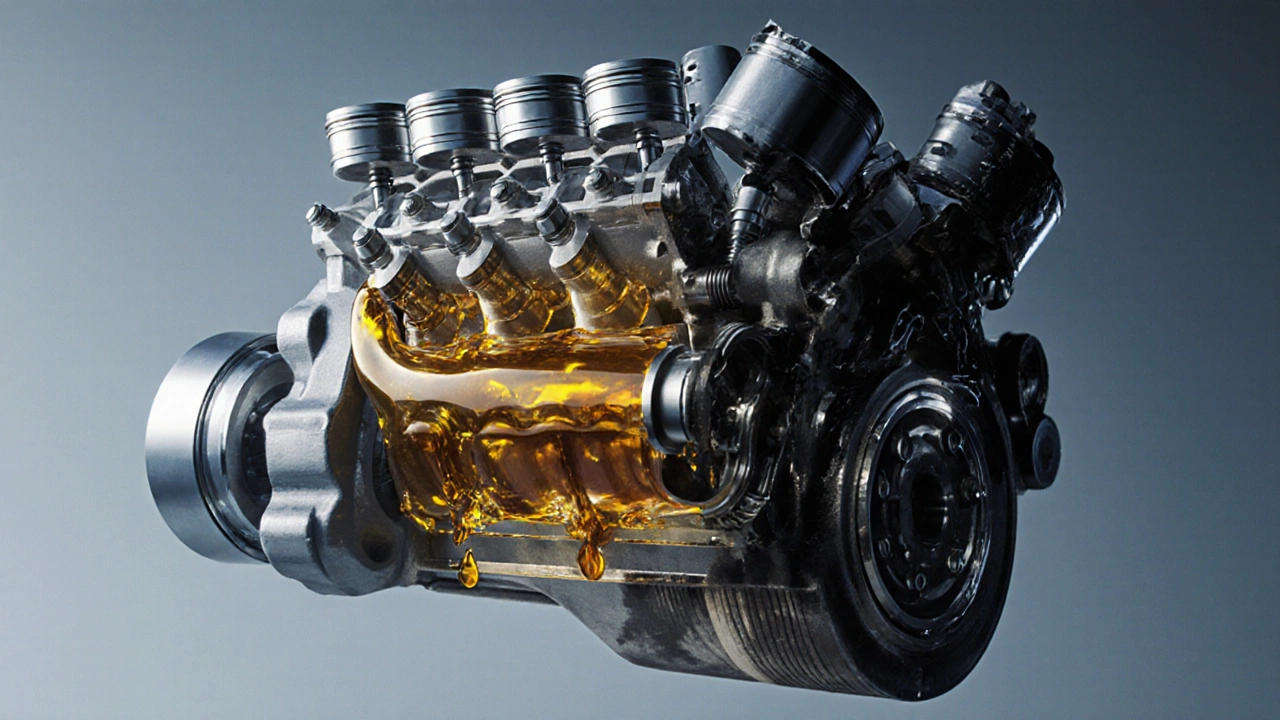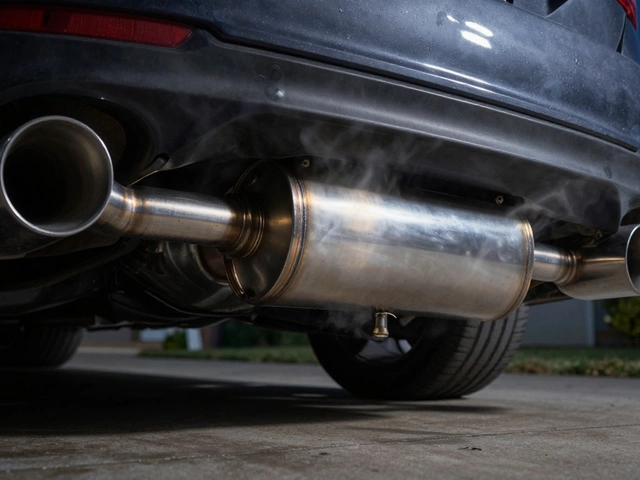Oil Change Cost Estimator
Current Mileage Estimate
Enter how many miles you've driven since your last oil change
Results
Enter your mileage to see potential repair costs
Regular maintenance costs: $50-$100 per change
When you hear the term engine oil is the lubricant that keeps a car's moving parts from grinding together, cooling them and carrying away contaminants, you probably think of a routine service every few thousand miles. But what if you keep postponing that oil change?
Why oil matters in the first place
Every internal combustion engine relies on a thin film of oil to reduce friction between metal surfaces. The engine the heart of a vehicle where fuel is turned into motion contains pistons, crankshaft, camshaft and valves - all moving at high speeds and temperatures. Without a steady supply of fresh oil, these parts start to wear, heat up, and eventually seize.
The oil filter a mesh device that traps metal particles and sludge before they circulate through the engine does a great job while the oil is clean. However, as oil ages, it breaks down, loses viscosity, and turns into a gummy mixture known as sludge.
What actually happens if you don’t change oil?
Skipping oil changes creates a cascade of problems that can show up quickly or take months to appear. Below are the most common symptoms you might notice.
- Increased engine noise: Metal on metal sounds louder because the protective film is too thin.
- Oil pressure warning light: The pump struggles to push thin or contaminated oil.
- Reduced fuel efficiency: The engine works harder, burning more gasoline per mile.
- Excessive exhaust smoke: Unburned fuel and oil particles escape through the exhaust.
- Rough idling and misfires: Poor lubrication affects valve timing and spark.
These signs often start after the oil has been neglected for around 5,000 miles, but the exact timeline depends on driving habits, climate, and oil quality.

Long‑term damage you can’t ignore
If you keep driving with old oil, the sludge builds up on critical surfaces. That sludge acts like a blanket, trapping heat and preventing proper cooling. Over time, the following serious issues develop:
- Engine wear the gradual removal of material from moving parts due to friction accelerates, leading to scored bearings and scored cylinder walls.
- The fuel efficiency how far a car travels per unit of fuel can drop by 10‑15% as the engine loses power.
- Higher emissions pollutants released through the exhaust because the combustion process becomes less efficient.
- Many manufacturers void the vehicle warranty the promise to cover repairs under certain conditions if they find evidence of neglected oil changes.
- In worst‑case scenarios, the engine can seize entirely, requiring a complete rebuild or replacement.
Cost comparison: Regular change vs. neglect
| Milage without change | Typical symptoms | Estimated repair cost (USD) |
|---|---|---|
| 0‑5,000 miles | Minor oil light, slight noise | $50‑$100 (oil & filter) |
| 5‑10,000 miles | Sludge buildup, reduced fuel economy | $200‑$600 (oil flush, possible gasket) |
| 10‑15,000 miles | Engine wear, overheating | $1,200‑$3,500 (bearing replacement, coolant repair) |
| 15,000+ miles | Engine seizure, catastrophic failure | $4,000‑$7,500 (engine rebuild or replace) |

How to avoid the nightmare
Here’s a quick checklist that keeps your car running smooth without breaking the bank.
- Follow the manufacturer’s recommended oil change interval - usually every 5,000‑7,500 miles for modern synthetic oils.
- Check the oil level at least once a month. The dipstick should show oil between the “low” and “full” marks.
- Pay attention to the oil change light or dashboard warnings. Reset the light after each service.
- Use the right viscosity (e.g., 5W‑30) and grade for your climate and engine type.
- Replace the oil filter every time you change oil - it’s cheap insurance against sludge.
Even if you’re a casual driver, setting a calendar reminder for the next service helps you avoid accidental neglect.
Key Takeaways
- Engine oil protects the engine; without fresh oil, friction, heat and sludge rise quickly.
- Skipping oil changes can shave up to 15% off fuel economy and lead to expensive repairs.
- Warranty coverage often hinges on documented oil‑change history.
- A simple check‑oil routine and adhering to the service schedule saves thousands.
Frequently Asked Questions
How often should I really change my oil?
Most manufacturers recommend a change every 5,000‑7,500 miles when using synthetic oil. If you drive in extreme temperatures or do a lot of short trips, stick to the lower end of the range.
Can I add fresh oil on top of old oil instead of changing it?
Adding oil only dilutes the old oil and doesn’t remove contaminants. It may buy a few miles, but you’ll still need a full change soon.
What does a thick, dark sludge look like?
When you drain the oil, any black, gooey residue that clings to the dipstick or pan is sludge. It’s a sign the oil has broken down and lost its lubricating properties.
Will using a high‑mileage oil fix damage already done?
High‑mileage oils contain seal conditioners and additives that can reduce leaks, but they can’t reverse wear already incurred. They’re best used as a preventive measure.
Does skipping an oil change affect my car’s resale value?
Yes. Buyers often request service records. Gaps in oil‑change history raise red flags and can lower the offer by several hundred dollars.








